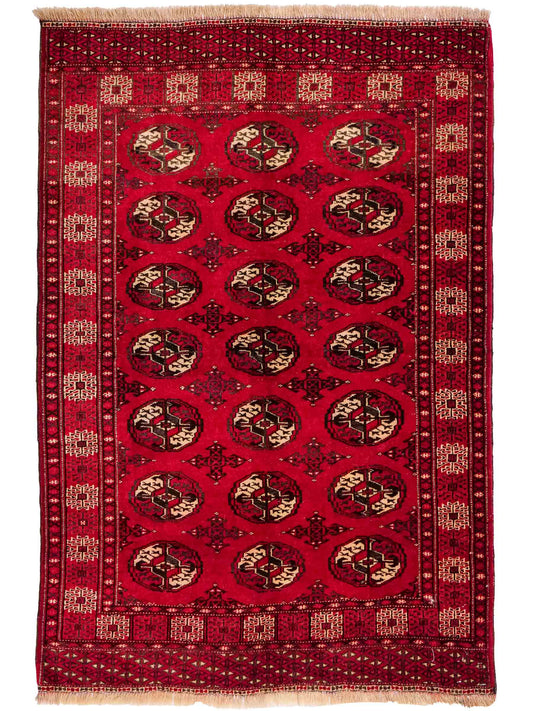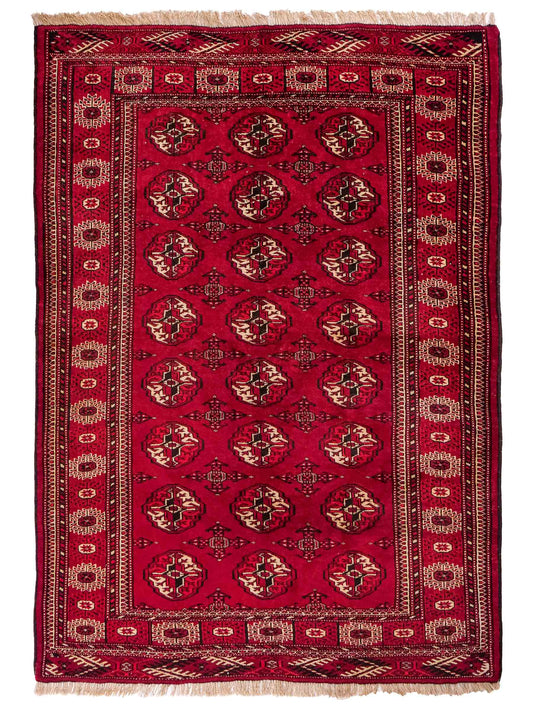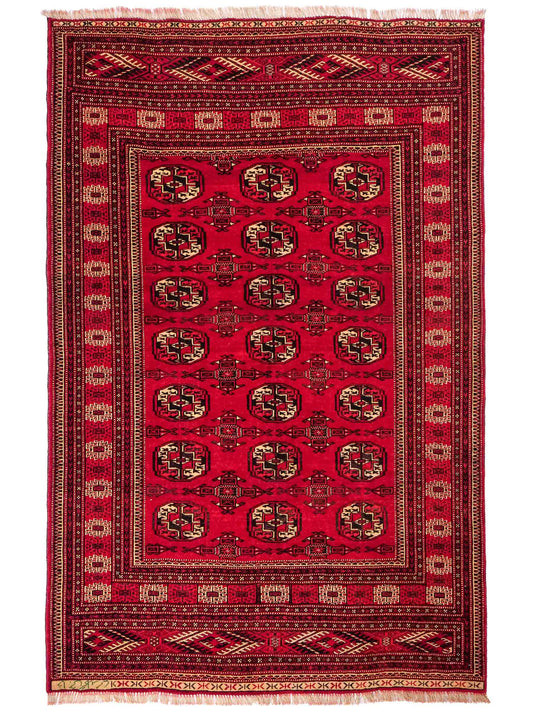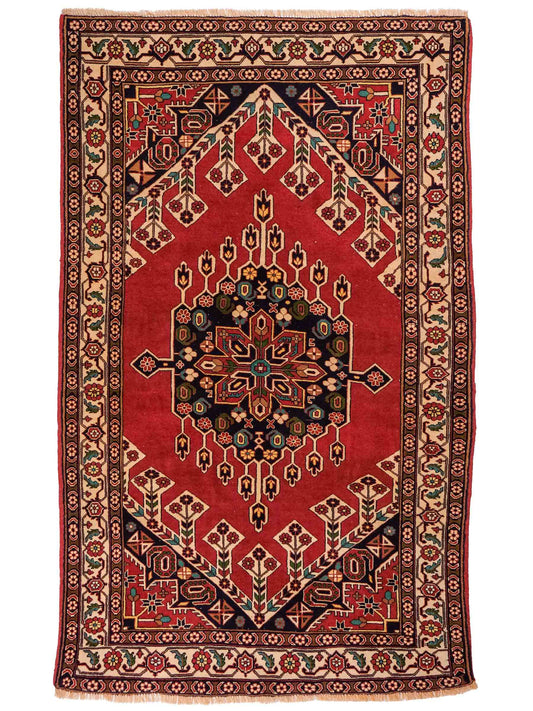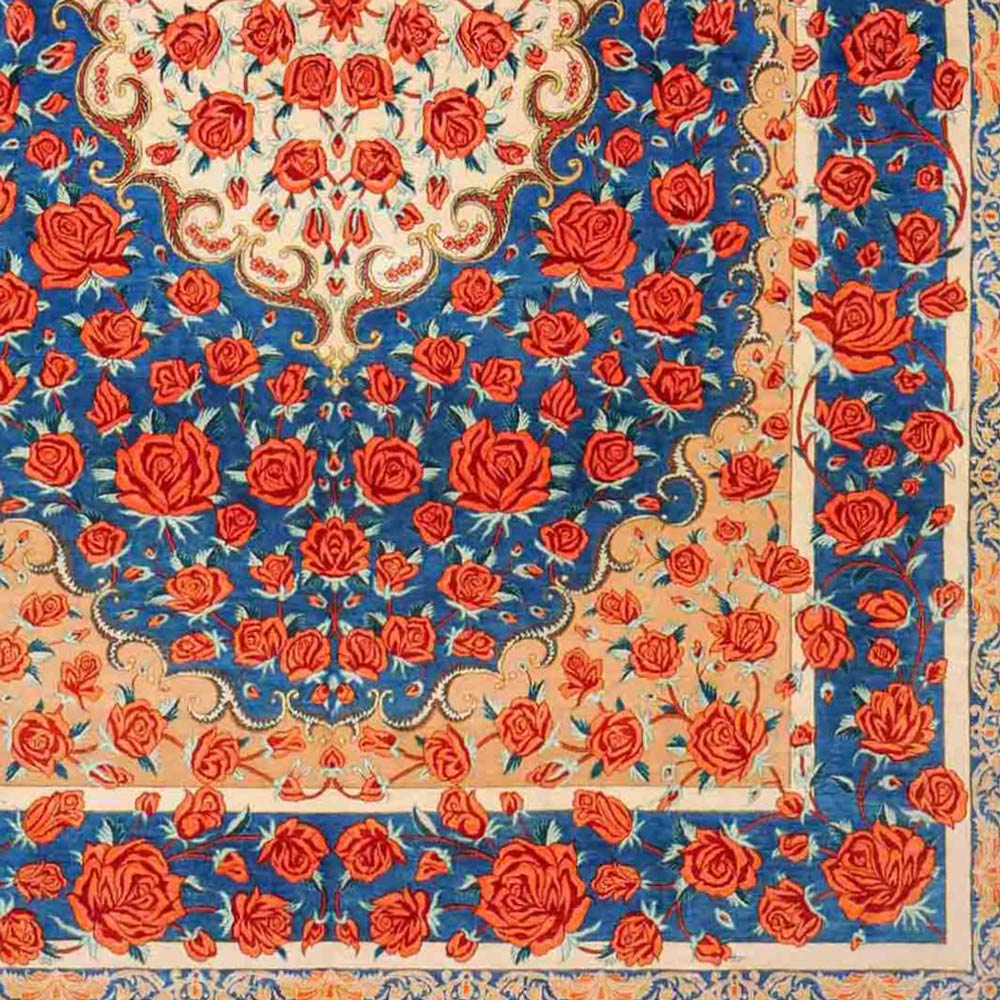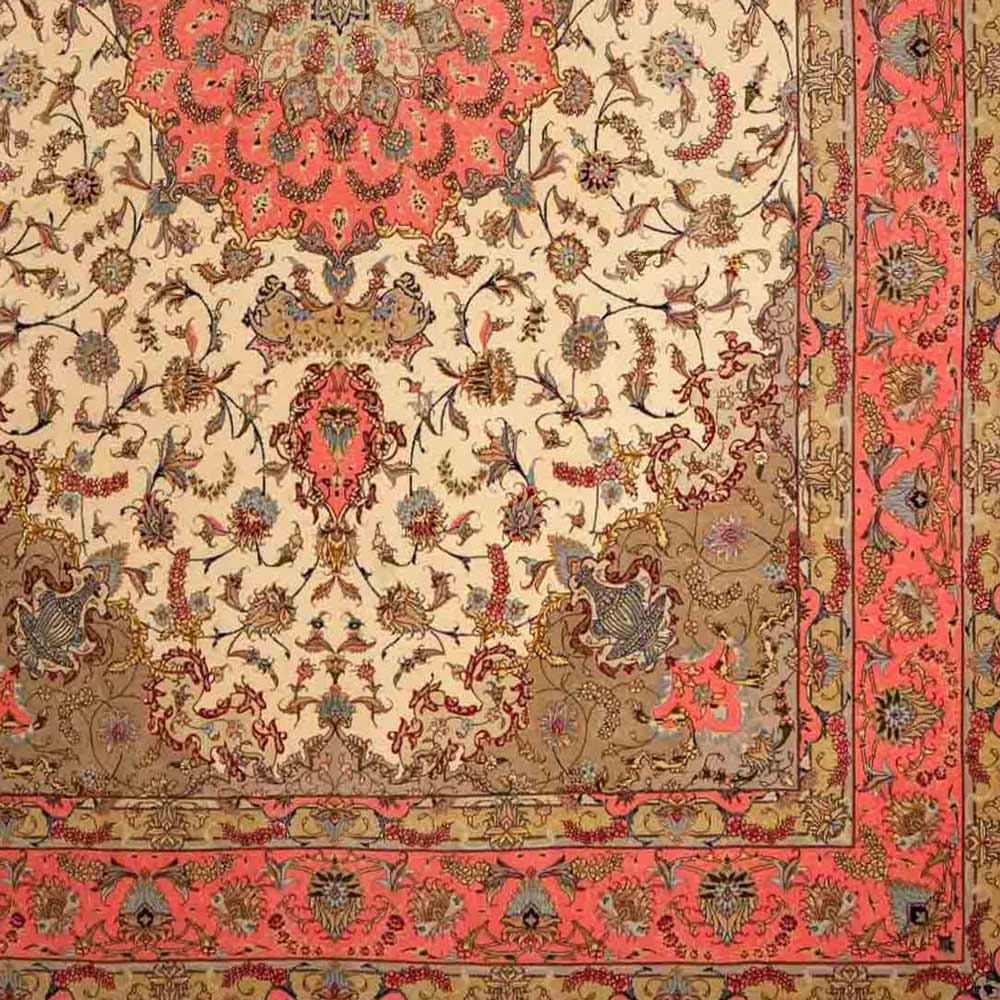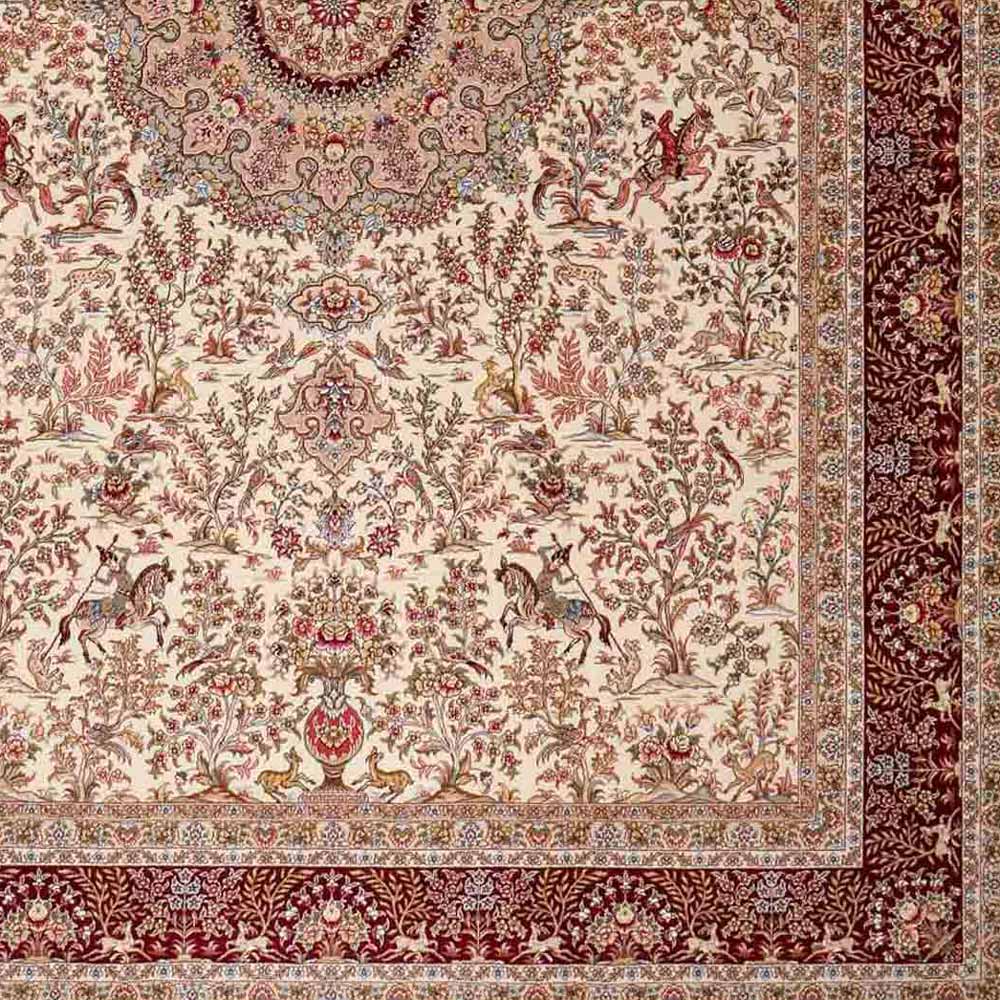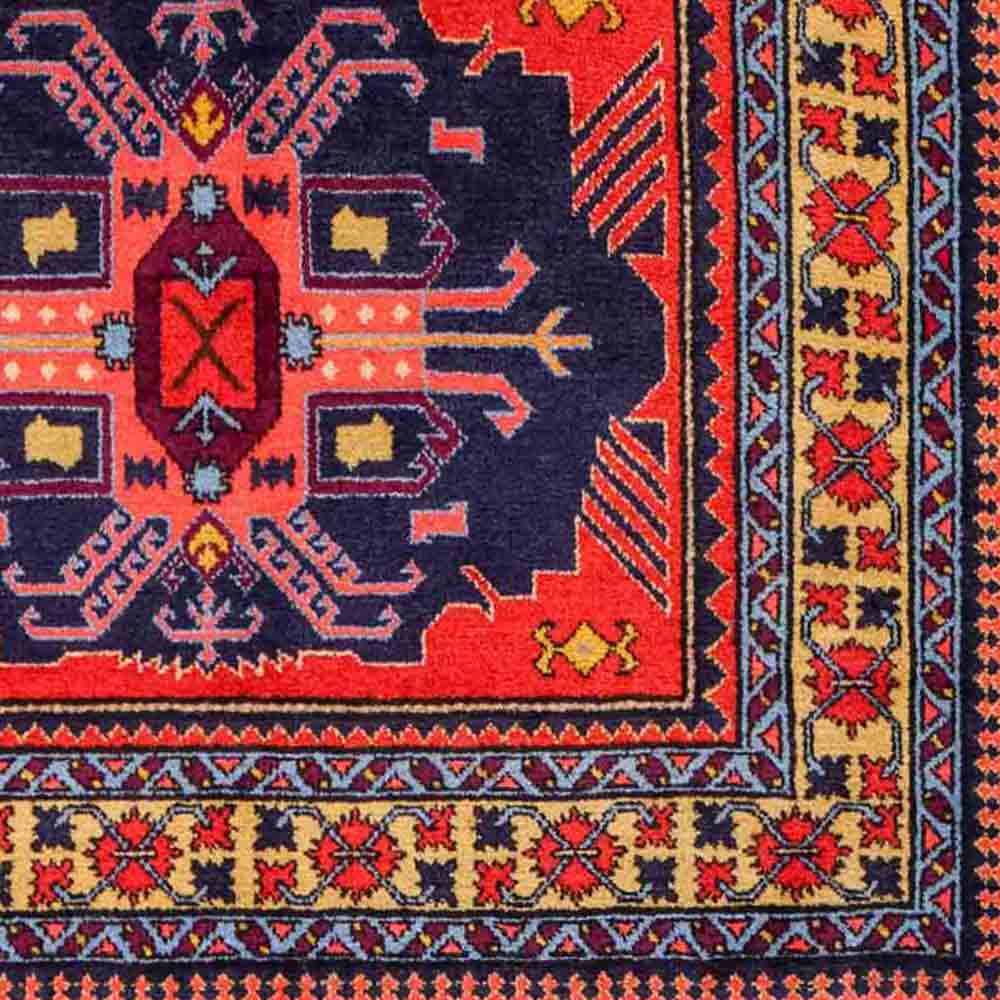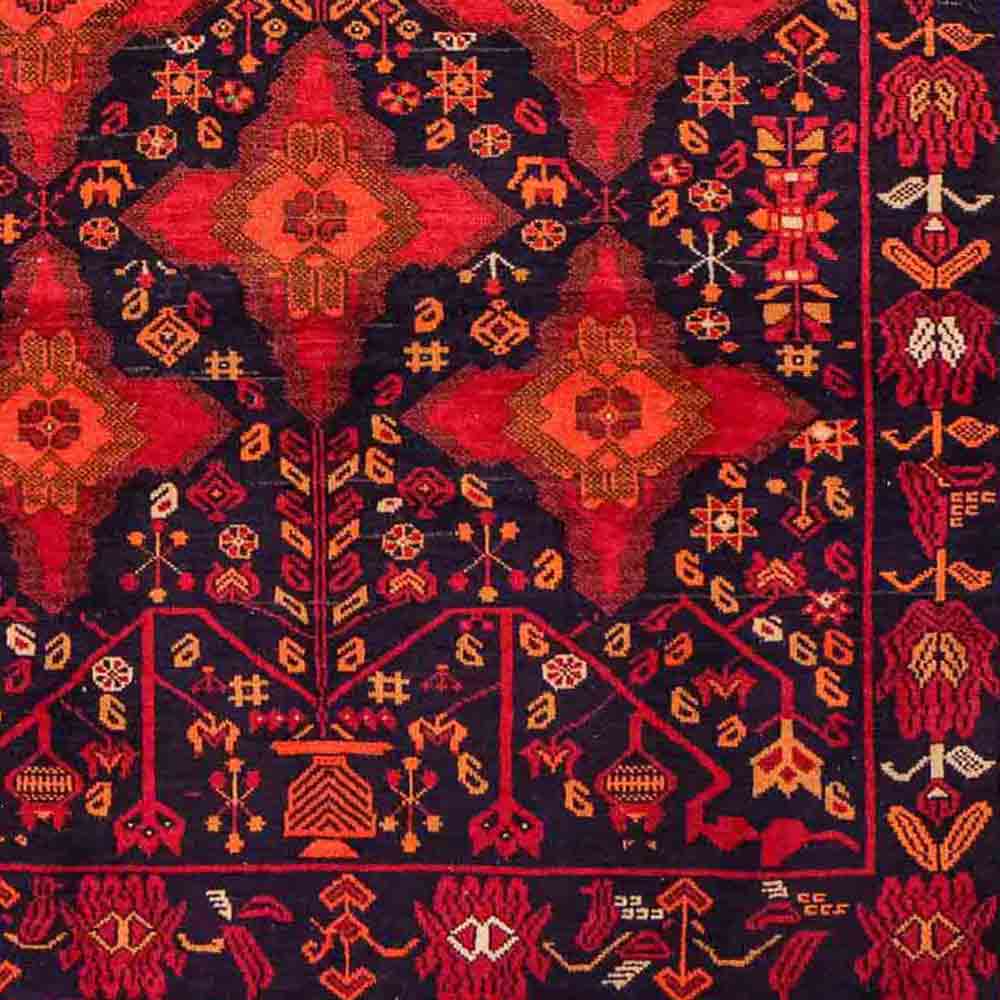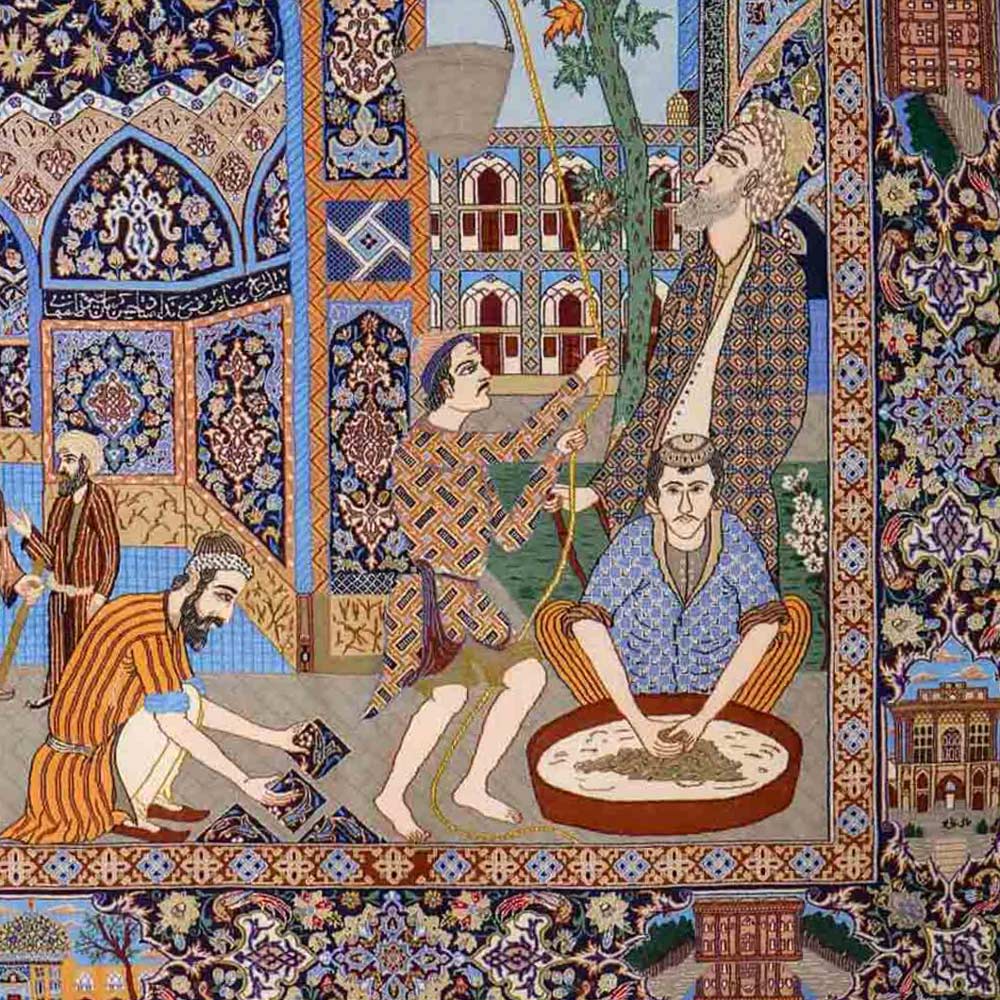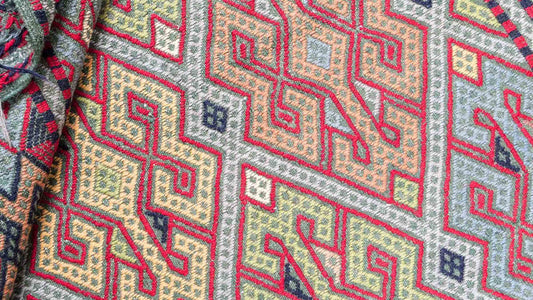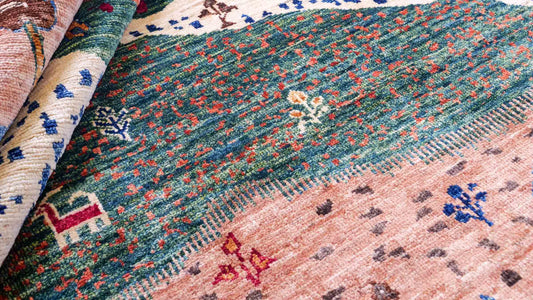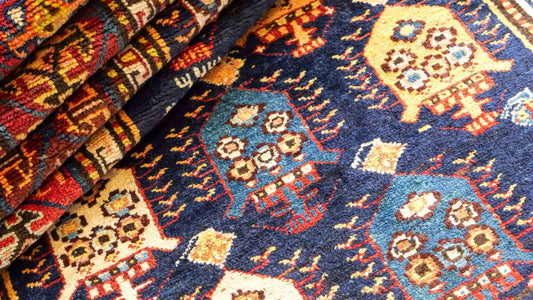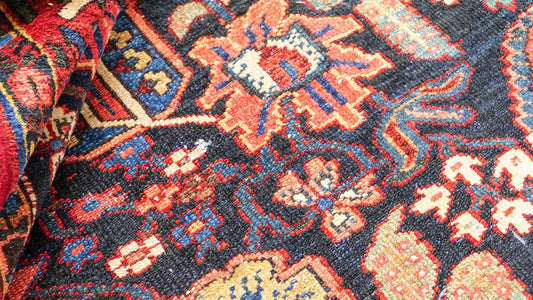
Turkaman
Daniel KhademiTurkaman rugs rank among the most captivating and culturally rich village and nomadic carpets of Central Asia. They embody authentic craftsmanship, a vibrant history, and a living nomadic style that continues to enrich homes around the world with their unique presence. Discover what makes genuine Turkaman rugs so special, how they are crafted, the symbolic depth they carry, and how to identify authentic pieces—for interiors full of character and story.
Turkaman Rugs: Key Facts at a Glance
- Origin: Turkmenistan (and parts of Northern Iran, Uzbekistan, Afghanistan)—the ancestral homeland of the Turkmen tribes
- Material: High-quality sheep’s wool, often plant-dyed, sourced from regional flocks
- Patterns/Design: Distinctive geometric motifs, renowned “Göl” medallions, striking borders
- Highlights: Densely knotted, richly detailed, exceptionally durable and visually impactful
- Craftsmanship: 100% handmade (mostly with symmetric/Turkish knot), 150,000–300,000 knots/m²
- Value: Collectible works of art and investment pieces—sustainable and exceptionally robust
- Care: Low-maintenance & built to last—ideal for everyday use across generations
- Interior Style: Eye-catching in rustic, minimalist, or modern interiors; pair beautifully with natural materials
Discover Turkaman Rugs in our shop or request personal advice to find your perfect original!
Origin, History & Cultural Significance of Turkaman Rugs
Geographic Influences of the Turkaman Region
The region of Turkmenistan is renowned for its breathtaking landscapes—stretching from the vast sands of the Karakum Desert to the lush valleys of the Amudarya river. These unique geographic features create ideal conditions for sheep farming, which in turn directly influences the quality of the wool used in these rugs. The Turkmen utilize the natural resources of their environment and often dye their wool with plant-based natural dyes, giving their rugs their signature deep, vibrant colors.
Regional Variations & Styles
Within the Turkaman tradition, there are various regional variants representing different designs and knotting techniques. Rugs from different cities or tribal groups often showcase specific patterns and color palettes. This diversity highlights the rich cultural mosaic of the Turkmen and ensures that buyers can always find unique, original pieces.
Historical Roots: The Story of Turkaman Rugs
The art of rug weaving among the Turkmen people has deep roots in a long nomadic history. These rugs are far more than utilitarian objects: they tell the stories of tribes, culture, and identity. Historical sources reveal that Turkaman rugs were widely used in the yurts of nomadic populations and played a key role in weddings and other major celebrations.
Symbolism & Cultural Meaning
The patterns and colors found in Turkaman rugs carry profound cultural meanings. Certain colors symbolize fortune or prosperity, while specific motifs narrate stories about the community and daily life of the Turkmen. This symbolism lends each rug an added layer of cultural context and emotional resonance.
Social & Economic Role: Rugs as a Way of Life
Turkaman rugs are of great importance to the socioeconomic structure of their region. The art of rug weaving is not just a cornerstone of cultural heritage—it is also an essential source of income for countless families. Women in particular are deeply involved in rug production, finding not only financial independence but also the opportunity to pass down and preserve their traditions and artisanal skills for future generations.
Design, Motifs & Colors: The Aesthetics of Turkaman Rugs
Turkaman rugs are famed for their expressive and often perfectly symmetrical patterns: the distinct “Göl” medallions (legendary tribal emblems), striking borders, and bold geometric forms. Their color palette ranges from deep reds and robust blues to earth tones and ivory highlights—all achieved using natural plant dyes, refined with expert craftsmanship.
What Makes Turkaman Rugs Unique?
- Iconic “Göl” medallions and repeated geometric patterns, rather than floral ornamentation
- Exceptionally dense, durable knotting—built for daily use and lasting legacy
- Functional and decorative: Ideal for design-conscious living concepts
- Authentic artisan work: Minor irregularities are a true mark of nomadic craft!
How They're Made – From Flock to Masterpiece
- Wool Selection: Finest regional sheep’s wool, hand-spun
- Dyeing: Traditional plant-based dyes (walnut, madder root, indigo) for rich tones
- Warping: Cotton or wool warp on classic looms
- Knotting: Symmetric/Turkish knot, 150,000–300,000 knots/m²—each rug purely handcrafted
- Pattern Making: Family and tribal symbols, always individually and rooted in tradition
- Finishing: Washing, shearing, hand-finishing of fringes and borders
Tip: Small variations in size or pile height are a natural mark of authenticity—not a flaw, but a true quality feature!
The Most Popular Village & Nomadic Rugs Compared: Baluch, Hamadan, Turkaman & Gabbeh
| Criteria | Baluch | Hamadan | Turkaman | Gabbeh |
| Origin | Eastern Iran, Afghanistan, Pakistan (nomadic) | Western Iran, many villages/regions | Northern Iran, Turkmenistan, Uzbekistan | Southwest Iran (Fars, Qashqai, Luri) |
| Material | Wool pile, often cotton warp | Wool pile, often cotton warp | Wool pile, often cotton warp | Wool pile, often cotton warp |
| Knot Density | 100,000–200,000 knots/m² | 100,000–300,000 knots/m² | 150,000–300,000 knots/m² | 40,000–100,000 knots/m² |
| Designs | Geometric, tribal, tree of life, prayer rugs | Geometric, floral, allover, medallion | “Göl”/floral motifs, diamonds, repeating patterns | Minimalist, geometric, colored fields, stylized animals |
| Colors | Earthy, red, blue, brown, ochre | Bold red, blue, beige, brown | Deep red, black, ivory, natural | Bold, earthy, yellow, red, green, blue |
| Character | Authentic, compact, rustic | Versatile, practical, affordable | Distinctive, uniform, highly durable | Soft, cozy, modern, homey |
| Price/Value | Mid-range | Entry-level, very popular | Mid-range | Entry to mid, very popular |
| Highlights | Handcrafted originals, symbolic meaning | Wide range of styles, everyday usability | Traditional, signature Göl motif, nomadic heritage | Thick, soft, extremely versatile, modern feel |
Checklist: How to Identify Authentic Turkaman Rugs
- Certificate of authenticity or provenance from a reputable dealer ✔
- Firm, resilient wool with no artificial shine ✔
- Signature “Göl” motifs or geometric tribal designs ✔
- Deep, matte natural colors (especially red, black, ivory, earth tones) ✔
- Hand-finished fringes and borders, subtle irregularities ✔
- The back structure reflects the front pattern ✔
Care & Preservation of Turkaman Rugs
How to Keep Your Turkaman Rug Beautiful for Generations:
- Vacuum regularly, never beat the rug
- Treat spills immediately with lukewarm water & cloth
- Avoid direct sunlight
- Professional cleaning recommended every 1–2 years
- For more detailed advice, visit our blog post: *How to Care for Hand-Knotted Rugs*
Decor Ideas: How to Style Turkaman Rugs
- Eye-catcher: A statement piece in the living room, entryway, or bedroom
- Boho Effect: Combine multiple tribal rugs for a unique ethnic look
- Modern: Contrast the rug with minimalist furniture or clean lines
- Warm Accent: Perfect with wood, leather, and natural materials in inviting, Scandinavian, or rustic interiors
Value & Investment: A Unique Piece for Life
Turkaman rugs offer excellent value for money. For a comparatively modest price, you not only receive a hand-knotted original, but also an exceptionally durable quality product that you will enjoy for many years and which will gain character over time. Although they are mostly found in the lower to medium price segment and appreciation in value is not guaranteed, they are appreciated by customers all around the world. In addition, purchasing Turkaman rugs supports the local economy of the region and helps to preserve its rich cultural heritage.
► For detailed tips & in-depth guidance, see our blog post: *Are Hand-Knotted Rugs a Good Investment?*
Request a free personal style or purchasing consultation for Turkaman rugs today!
FAQ – Frequently Asked Questions about Turkaman Rugs
What defines a genuine Turkaman rug?
► Hand-spun sheep’s wool, striking Göl medallions, rich deep colors, distinctive tribal ornamentation, and authentic nomadic heritage.
Are Turkaman rugs easy to care for?
► Yes—regular gentle vacuuming and spot-cleaning are usually enough. Keep away from direct sunlight! For more detailed advice, visit our blog post: *How to Care for Hand-Knotted Rugs*
Do Turkaman rugs appreciate in value?
► Originals with proven provenance and unique designs are always in demand and tend to hold their value. —read more in our guide: *Are Hand-Knotted Rugs a Good Investment?*
How long do Turkaman rugs last under normal use?
► With proper care, for decades—often becoming treasured family heirlooms.
Where can I buy an authentic Turkaman rug?
► The best sources are specialist dealers or trusted online shops. At JUPITER Intl, every hand-knotted, hand-tufted, and handwoven rug comes with a Certificate of Authenticity.
Conclusion: The Fusion of Art & Tradition in Turkaman Rugs
Turkaman rugs are a unique example of the fusion of art, culture, and tradition. They enrich your home with vibrant colors and patterns that tell stories. Investing in a Turkaman rug means owning a timeless work of craftmanship that's both functionally practical and creates a warm, welcoming atmosphere.
Request your personal consultation or explore our current Turkaman Collection now!
Related blogs & blog posts you might also be interested in:
→ Design Classics, Countries of Origin, Carpet Materials, Carpet Guide

